We support our Publishers and Content Creators. You can view this story on their website by CLICKING HERE.
Election Day is in five days. And with that, let’s review some of the more likely electoral map scenarios.
Note: these are possibilities. So, try to control yourself when we display a scenario that you don’t like. The polls are historically tight. Unfortunately, based on the data, this race could go either way.
Scenario 1: RealClearPoltics
Let’s begin with the RealClearPoltics No Toss-Up map – an aggregation of polls for presidential and congressional races into averages – which currently has the race at 287-251 for Trump:
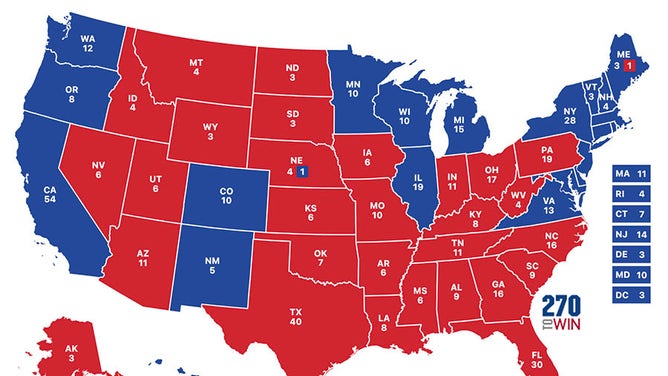
How likely is the above RCP map to come to fruition?
Moderately, at best.
All seven battleground states – Wisconsin, Michigan, Pennsylvania, North Carolina, Georgia, Arizona, and Nevada – are separated within the margin of error +/- 3), per RCP averages:
- Wisconsin: Harris +0.2
- Michigan: Harris +0.5
- Pennsylvania: Trump +0.7
- North Carolina: Trump +1.0
- Georgia: Trump +2.7
- Arizona: Trump +2.4
- Nevada: Trump +0.4
We are also a bit skeptical of the crack in the Blue Wall, where Trump takes Pennsylvania and Harris wins Wisconsin and Michigan. The three Rust Belt swing states have voted as a unit in every presidential election since 1992.
It’s more likely than not that the three states will either go all blue or all red.
Let’s talk about that:
Scenario 2: Blue Wall holds
Not only have the three states voted as a trio since 1992, but they have voted for the Democratic candidate in every presidential election since but one (more on that one in a moment).
If there are no upsets outside the swing states and Harris wins Nebraska’s 2nd Congressional District (as she’s projected), a Blue Wall sweep would put her at exactly 270, and thus a victory.
Take a look:
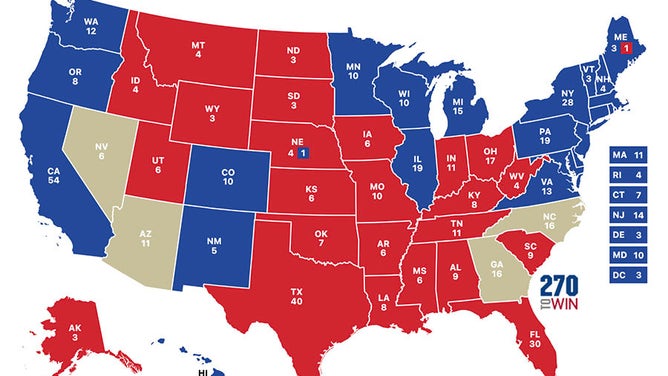
Even if Trump were to win the remaining four swing states, he’d max out at 268.
George W. Bush overcame a Blue Wall sweep in 2000 by winning Virginia and in 2004 by winning Virginia and New Mexico. Trump does have some momentum in Virginia and New Mexico—which are both now considered blue states—but still trails Harris outside the margin of error, per RCP averages.
Scenario 3: Trump flips the entire wall
We said that Wisconsin, Michigan, and Pennsylvania have gone blue in every presidential election since 1992 but one. That one was in 2016 when Trump took all three in victory over Hillary Clinton.
While sweeping the Rust Belt swing states wouldn’t put Trump at the 270 mark, as it would Harris, he’d sit at 263. At that point, he’d have to win just one of Georgia, Arizona, or North Carolina.
In other words, Trump will win the election if he can flip the entire wall:

Scenario 4: Blue Wall cracks
Let’s say there is a crack for the first time since 1988. Let’s say Trump wins Pennsylvania (his strongest of the three) and loses Michigan and Wisconsin. That’d put the race at 251-238, Harris.
Still, in that case, Trump would be in a better position to reach 270 than Harris.
Based on polling, Trump’s chances of winning Arizona and Georgia are both over 50%. While betting aggregators like Polymarket can be deceiving, Trump has greater than 70% of winning in both states. Those percentages would likely have been bet down if Harris’ internals showed any optimism in either state.
In this scenario, Trump would have to win just one of either Nevada or NC, whereas Harris would have to win both:
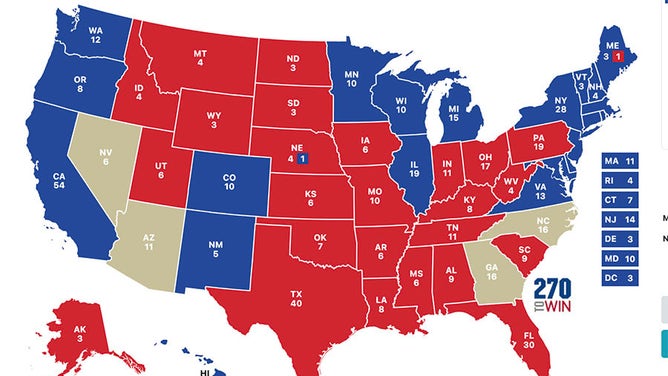
Scenario 5: A comfortable victory for Trump.
This one is simple.
If the polling errors are consistent with the past two elections—which, on average, underestimated support for Trump by five points—Trump would win all seven swing states and cruise to victory with at least 312 electoral votes.
And, frankly, this scenario is just as likely as any of the above:
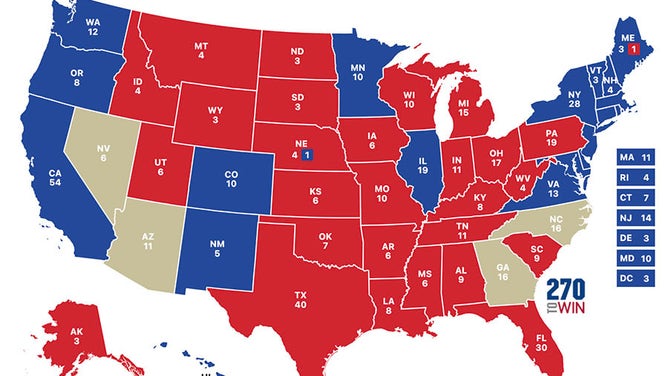
Scenario 6: A comfortable victory for Kamala.
It’s difficult to measure how realistic this scenario is, for a few reasons.
On one hand, polls have notoriously underestimated support for Trump and overestimated support for his challenger. On the other hand, the polls did underestimate support for Democrats two years ago during the midterms. Back on the other hand, while Trump-endorsed candidates were on the ballot in 2022, he was not.
That said … if the polling errors are consistent with 2022, Harris would win in at least Wisconsin, Michigan, Pennsylvania, North Carolina, and Nevada.
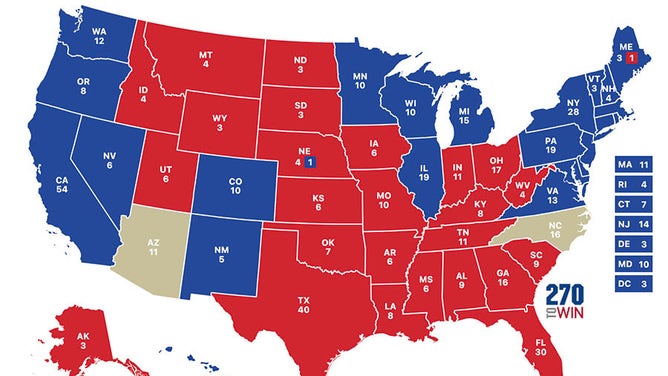
Soooo, what does all of that mean?
The numbers say the election is a true toss-up.
Of course, as we demonstrated, a toss-up election does not necessarily mean the final electoral count will be narrow. What’s a toss-up is who wins: Trump or Harris.
Conclusion:
If Wisconsin, Michigan, and Pennsylvania vote as a unit for the ninth straight presidential election, the winner of those states will win the presidency. If there’s a crack, Trump will have about a 70% chance of winning.
Slight advantage: Donald Trump.

 Conservative
Conservative  Search
Search Trending
Trending Current News
Current News 





